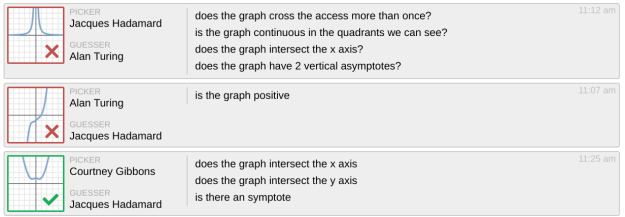I’ve really enjoyed writing about task propensity over the last few months, and I’ve learned a ton about teaching and learning in the process. The series of posts was inspired by a paper on efforts to reform mathematics curriculum in the Netherlands. Here is the an excerpt from the introduction of the paper that got me started on this path:
In each case student performance did not match expectations, and in each case textbooks analysis revealed a focus on teaching effective procedures for specific tasks, instead of developing mathematical insights at a more advanced conceptual level as the reform intended. We will argue that this is at least in part due to what we call, “task propensity,” which we define as the tendency to think of instruction in terms of individual tasks that have to be mastered by students. This task propensity entices teachers and textbook authors to capitalize on procedures that can quickly generate correct answers, instead of investing in the underlying mathematics while accepting that fluency may come later.
The authors focus on reform curriculum — curriculum that was meant to support a more conceptual mathematical focus. I’m using task propensity more broadly; in the same way that teachers and curriculum writers fall into the trap of focusing on individual tasks rather than the underlying mathematics, students working on rich, engaging tasks fall into that same trap. In short, it is easy to lose the forest for the trees, and it’s hard to step back from individual problems to see the bigger picture.
I was inspired to write this series because I see task propensity in my teaching all the time, both in the ways I structure tasks and activities and the ways students engage with them. I focused initially on Desmos activities because I think they can be particularly prone to task propensity, but I now see it in more and more places. I think task propensity is a natural human instinct, in which the practical concerns of solving the immediate problem supersede the learning that could be gained from stepping back, taking a broader perspective, and considering how the thinking in a task could be applied to new situations. I also think it’s inevitably a part of any ambitious and engaging curriculum.
I’ve explored three strategies for addressing task propensity that I think are also three useful design principles in any curriculum that focuses on students learning math by doing math — staying humble, follow-up tasks, and the pause.
Stay Humble
When I stumble across a great lesson on the internet, it’s easy to focus on the allure of a fun activity that students will enjoy rather than the substance of the learning under the hood. That’s not to say student engagement is unimportant, just insufficient for meaningful learning. Staying humble means constantly calibrating my lens for what a great lesson is, focusing on substance over style. It means taking an ambitious lesson that is broad in scope and trimming it down to focus on a smaller number of well-defined mathematical goals. It means putting aside the big picture at times to zoom in on the building blocks that students need to support their larger understanding. Staying humble doesn’t mean teaching boring classes, but it does mean avoiding the temptation of sleek and sexy lessons when they’re just not the right tool for the job.
The Follow-Up Task
Student engagement is great, but inevitably leads to a focus on the present rather than the future. In lots of tasks, that’s what I want, and I embrace the energy in the room. It also creates an opportunity for a deliberately designed follow-up task, where students return to a previous activity and consider its implications in a new problem. The initial task acts as an anchor to contextualize student thinking, whether they refer back to technology or manipulatives, borrow a bit of engagement from a fun experience, or reuse a useful problem type. Often during an engaging activity students are particularly engaged with the more “fun” elements of the task and not the underlying mathematics. Follow-up tasks take a step back from the incentives in the moment while returning to essential ideas that students can learn from.
Pause
When students are caught up in an engaging activity I don’t instinctively want to stop them. I want to enjoy the moment and watch them have fun. At the same time, they’re also likely caught up in the activity in a way that prevents them from slowing down and thinking about how the math they’re doing might help them solve new problems in the future. While pausing them might elicit some groans, it also provides a great opportunity for students to think metacognitively about the connections they’re seeing and the math under the surface, rather than getting lost in the sauce of the moment-to-moment tasks. Pausing an activity is fundamentally about harnessing energy in the room to advance specific goals rather than leaving student thinking to chance.
Closing
Spending this time exploring task propensity has helped me to think about teaching and learning in new ways. It’s an important reminder that kids learn what they spend time thinking about, and I want to plan my lessons deliberately to promote the type of thinking that will support new mathematical knowledge. Engagement is not the same as learning, but I can use student engagement and well-structured activities to create opportunities for students to do the thinking I want them to do. And student thinking should not be left up to chance — if I have a goal for students, I should modify or restructure the student experience to make sure they meet it.






















